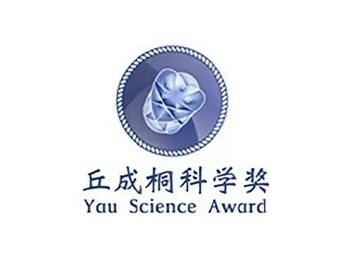Physics Research Topics for High School Students
Exploring research areas is a valuable opportunity for high school students. It can not only stimulate your academic passion but also add highlights to your resume in college applications. If you are curious about physics, then studying physics to gain a deeper understanding of this field would be a good choice. Physics research is not limited to physics itself. It is also closely related to other subjects such as biology, chemistry, and mathematics. Therefore, even if your interest is not entirely in physics, physics research can still be a starting point for your exploration.
How to choose a physics research topic for high school students?
Before starting physics research, it is crucial to understand how to choose a suitable topic. A good research topic should not only stimulate your interest but also be timely and relevant. This means that you should select a problem that has not been fully solved by the current scientific community, rather than a topic that has been widely studied and has a clear answer. At the same time, your topic should not be too broad, so that the research content is too scattered, nor too narrow so that it is difficult to obtain enough research materials.
Remember that research topics can span multiple disciplines. You can combine physics with other fields of interest to conduct interdisciplinary research. This will not only enrich your research content but also demonstrate your innovation and multidisciplinary integration capabilities. Such research experience will undoubtedly add a lot of color to your university application.
What are the unique physics research topics?
1. Density functional theory calculations for the development of high refractive index polymers
In recent years, high-refractive index polymers have been widely developed due to their potential applications in advanced optoelectronic manufacturing. In this project, to explore a large number of polymers with different chemical structures, save experimental workload, and quickly determine the structure of the most suitable compound, we will focus on studying high refractive index polymers through density functional theory calculation methods.
2. Laser accelerator
With the rapid development of laser technology, the peak power of lasers has increased rapidly in recent years. This topic leads students to explore the factors that affect the quality of electron beams by tail field acceleration through 1D numerical simulation methods and give corresponding solutions to control the quality of electron beams.
3. Design of antennas for specific frequency signals
One of the reasons why micro antennas cannot receive signals at specific frequencies is the impedance mismatch between the antenna and the signal receiver (in most cases, an oscilloscope), so a system that can adapt the impedance of the two will be very practical. This project aims to design a system that can adapt a micro-antenna (within 5cm in size) to an oscilloscope at the expected frequency.
4. Research on household anti-fog agents
In daily life, many people will encounter the situation of fogging glass or mirrors, and they can only wipe them frequently, which is very annoying. Based on this background, this project aims to explore the anti-fog effect of daily necessities in the home and their optimal anti-fog concentration, to compare their anti-fog effects, to find a method (item) that is both convenient and cheap and has a good household anti-fog effect.
5. Study on the thermal performance of geothermal heat exchangers based on computational fluid dynamics
The object of this project is the coaxial shell-and-tube buried pipe ground source heat pump. By studying the heat transfer process of the coaxial shell-and-tube buried pipe heat exchanger, a model of the coaxial shell-and-tube buried pipe heat exchanger is established, and numerical simulation is performed using computational fluid dynamics software.
6. Multi-agent simulation study of Barrett's law from a dynamic perspective
Barrett's law comes from the fact that the wealth and income of the British in the 19th century had a specific pattern, which was accidentally noticed by Italian scientist Vilfredo Pareto in 1897 when he was engaged in economic research. We will study it in several aspects, including knowledge preparation, theoretical model construction, and numerical simulation.
7. Improvement of indoor low-frequency noise
Barrett's law comes from the fact that the wealth and income of the British in the 19th century had a specific pattern, which was accidentally noticed by Italian scientist Vilfredo Pareto in 1897 when he was engaged in economic research. We will study it in several aspects, including knowledge preparation, theoretical model construction, and numerical simulation.
8. Circuit for creating a stable magnetic field
Most contemporary experiments use electronic devices controlled by analog signals. However, analog signals are bound to introduce some noise, and many experiments require an extremely stable magnetic field. This project aims to design a circuit that can reduce noise from ~0.1% to <1ppm.
9. Stars around supermassive black holes lead to enhanced microlensing in the center of galaxies
When the background light source passes behind a massive celestial body, its brightness will increase temporarily due to the effect of gravitational lensing. If there is a low-mass companion near the high-mass celestial body, its standard luminosity curve will be slightly disturbed. Based on the principle of this microlensing, we can detect planets near stars.
10. Dust radiation and star formation activity of weak emission line quasars
This project hopes to obtain its average multi-band energy spectrum distribution through superposition analysis of a large sample of high-redshift weak emission line quasars and compare it with the average multi-band energy spectrum distribution of normal emission line quasars of the same brightness and redshift, to examine the dust radiation and star formation activity of the host galaxy of weak emission line quasars.
If you have a strong interest and curiosity in physics and want to study in-depth and expand your knowledge boundaries, then the Embark Exploration Program will be an ideal choice. This is an online course designed for high school students who are interested in conducting independent research under the guidance of professional mentors. Through this program, you will have the opportunity to participate in a selective research course and explore the mysteries of physics with like-minded classmates.
The Embark Exploration Program not only provides a platform for you to communicate and learn with experts but also allows you to receive professional guidance and feedback on your research work. Here, you will be able to develop your research skills, cultivate critical thinking, and take solid steps in the academic field.
If you are interested in this program, please feel free to contact us. We look forward to starting this journey of exploration with you.



